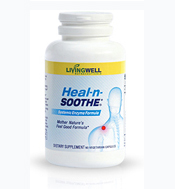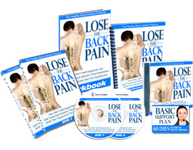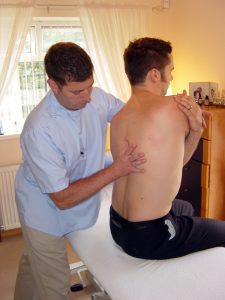What is it?
Degenerative disc disease is not actually a disease at all. It’s a term that describes the natural changes the spinal discs undergo as a person ages. Degenerative disc disease usually occurs in the lower back and the neck, though it can take place anywhere along the spine. As a disc degenerates, it may put pressure on the spinal cord and nerves, which often leads to pain and may affect nerve function. While everyone will experience these changes in their discs, most people will not have pain.
What causes it?
Spinal discs break down with age, resulting in a loss of fluid that can prevent discs from acting as natural shock absorbers. This fluid loss makes discs thinner and shrinks the gap between the vertebrae. Muscle imbalances – essentially, one set of muscles overpowering another – create “postural dysfunctions” that put abnormal pressure on a disc and cause increased wear and tear over time. Eventually, the weak spot gives way and makes contact with the nerve, bringing pain. Barring trauma, degenerative disc disease does not happen overnight. It takes a long time for a nerve to be put under enough pressure to cause pain.
What are the symptoms?
The most common symptoms are back or neck pain. Many people have no pain, while others with the same degree of disc damage have severe pain that limits their activities. An affected disc in the neck area may result in neck or arm pain, while one in the lower back may bring pain to the back, buttocks, or leg. The pain often gets worse when you bend, reach, or twist. In some cases, there may be numbness or tingling in your leg or arm. Loss of bowel or bladder control is deemed a medical emergency, so you should get to the emergency room as quickly as possible if either of these things happens to you.
How is it diagnosed?
Degenerative disc disease is diagnosed with a medical history and physical examination. During the exam, your doctor should check for range of motion and pain associated with the affected area, as well as any tenderness, numbness, tingling, or weakness. Your doctor should also ask about underlying conditions, such as fractures, tumors, and infection. If this examination shows no signs of a serious condition, imaging tests – such as an X-ray – are probably unnecessary.
How is it treated?
Common treatments include cortisone injections, non-steroidal anti-inflammatory drugs (NSAIDs), hot packs, ultrasound, electrical stimulation, and therapeutic exercises. Surgery is also an option, with the two main goals being to take pressure off the nerve and stabilize the joints.
Why do traditional treatments fail?
Most traditional treatments fail because they simply address the symptoms and do not address the cause of the condition. Your degenerated disc is a physical problem, and it requires a physical solution. There are no pills or injections that can create postural balance in your body, which is what is necessary to reduce the pressure on the nerve.
Which treatments work best?
The principles of Muscle Balance Therapy™ address both the pain of a degenerative disc and the root of the problem – in other words, what’s causing the pressure in the first place. Through strategic body assessments, your individual muscle imbalances can be identified. Once that is done, a very targeted corrective program can be designed for your specific needs.
To learn more about how you can get lasting relief from your Back Pain by using Muscle Balance Therapy™, we suggest you read the latest copy of our Back Pain Relief Guide, simply Fill out the form below now and you’ll receive free instant access.
Top Recommendations
Here are the Top Recommended Solutions for Back and Neck Pain

Natural Pain Reliever delivers instant relief from chronic pain! This pain fighting formula penetrates deep into your muscle tissue and repairs damage to your body's cells - where all of your muscle pain starts. Proven to be 100% Effective, Rub it on and the pain is gone!
Click Here to Learn More
Heal-n-Soothe™ is a combination of the most powerful natural anti-inflammatory and pain relieving ingredients known to man... and have been scientifically proven to work. And unlike NSAID's, there are no dangerous side effects..
Click Here to Learn More
Get rid of your back-pain for good. Join over 56,712 people who've erased back pain and sciatica from their lives. This complete back pain relief system will show you how to identify the true cause of your pain, and get lasting relief once and for all!
Click Here to Learn More

 Spinal discs break down with age, resulting in a loss of fluid that can prevent discs from acting as natural shock absorbers. This fluid loss makes discs thinner and shrinks the gap between the vertebrae.
Spinal discs break down with age, resulting in a loss of fluid that can prevent discs from acting as natural shock absorbers. This fluid loss makes discs thinner and shrinks the gap between the vertebrae.